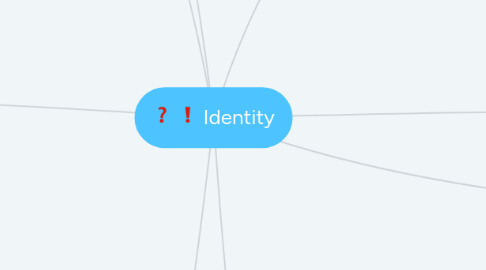Identity
par Mohammad Shreif


1. Identity and Language
1.1. The labels are the relationships(social and interpersonal relationships)
1.2. Labels may be changed over time since they are affected by DYNAMIC relationships.
2. Identity and Development
2.1. Individual Identity development depends partly on the relative position of location of the identity within the social hierarchy. The position are distinguished to:
2.1.1. Minority Identity: The sense of belonging to non dominant group.
2.1.2. Majority Identity: The sense of belonging to the dominant group.
3. Social and cultural Identities
3.1. Gender identity The identification with the cultural notions of masculinity and femininity and what it means to be man or woman.
3.2. Sexual Identity: Ones identification with varies categories of sexuality.
3.3. Age Identity: The identification with the cultural conventions of haw we should act, look, and behave according to our age.
3.4. racial identity identifying with a particular racial group. Although in the past racial groups were classified on the basis of biological characteristics, most scientists now recognize that race is constructed in fluid social and historical context.
3.5. ethnic identity A set of ideas about ones own ethnic group membership, a sense of belonging to a particular group and knowing something about the shared experience of the group.
3.6. religious identity The sense of belonging to a religious group.
3.7. class identity the sense of belonging to a group that shares the same economic, occupational, or social status.
3.8. regional identity identification with a specific geographic region of a nation.
4. Steriotype and prejdise
4.1. steriotypes are the widely beliefs about a group of people.
4.2. Prejudice is a negative attitude toward a cultural group based on littles or no evidence.
5. Our Identities are expressed communicatively, in CORE SYMBOLS, LABELS, AND NORMS.
5.1. CORE SYMBOLS: The fundamental beliefs shared by members of a cultural group. LABEL is a category of core symbols.
6. The social science perspective: The identity is created in part by the self and in part in relation to group membership.
6.1. Cross Sectional perspective(Alan Ronald) Three aspects of identity present in all individuals
6.1.1. Individualized: the sense of self as independent and self relient.
6.1.2. Familial Identity: The sense of self as always connected to the family and others.
6.1.3. spiritual Identity: Identification with feeling of connectedness to others and higher meanings in life.
7. Interpretive perspection: It emphasizes that Identity is negotiated, co_created, reinforced, and challenged through communication with others.
7.1. Intercultural communication is filled by challenges between ASCRIBED and AVOWAL Identities.
7.1.1. Avowal: The process in which an individual portrays his or her self. Ascribtion is a process in which others attributes identities to an individual.
8. Critical Perspective: This perspective emphasizes the dynamic nature of identities, but it shed the light to contextual and often confictual elements of Identity Development.
8.1. critical approach tends to understand the identity formation within the context of HISTORY, POLITICS, ECONOMICS, and DICOURSE.
8.1.1. critical perspective insists on the constructive nature of the identity, namely the forces and needs that give rise to certain identity.

